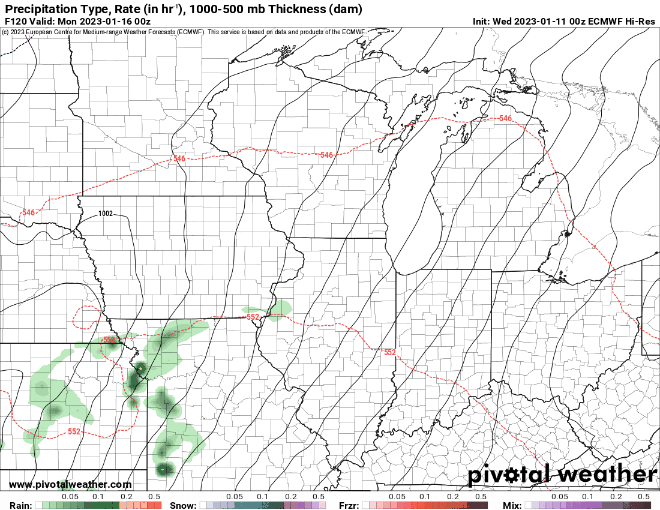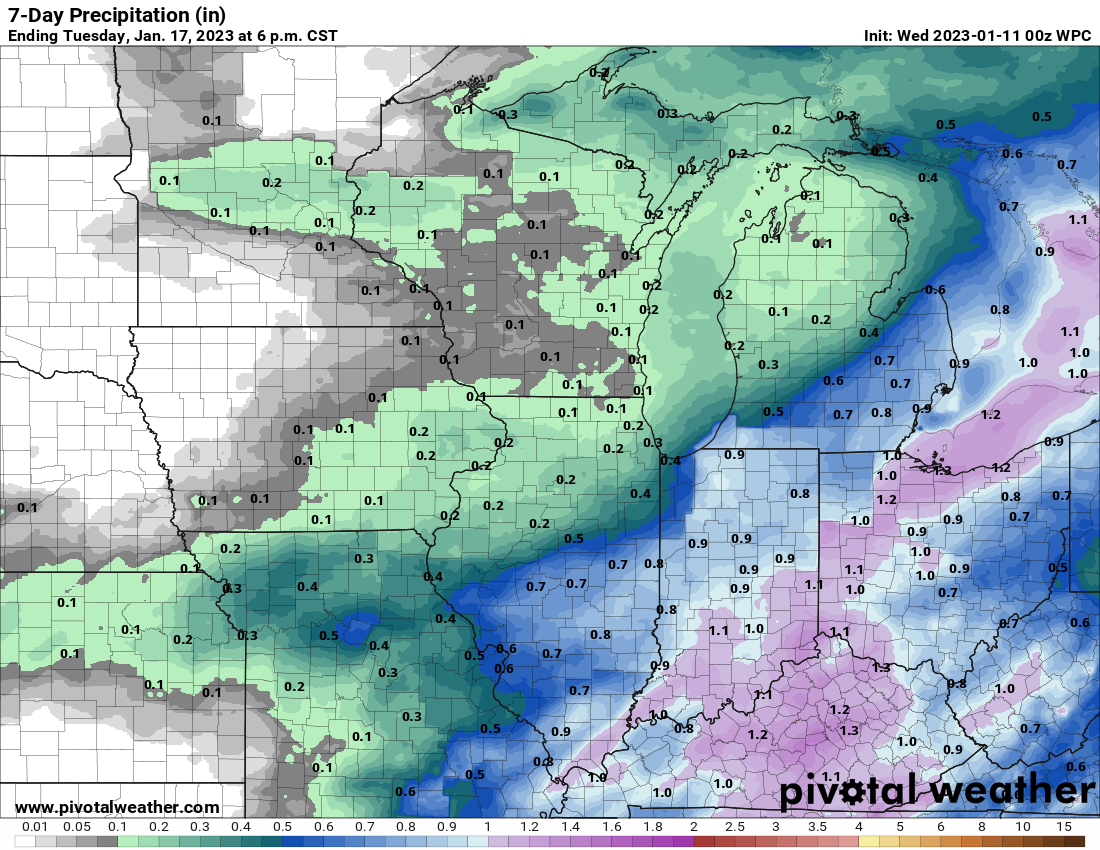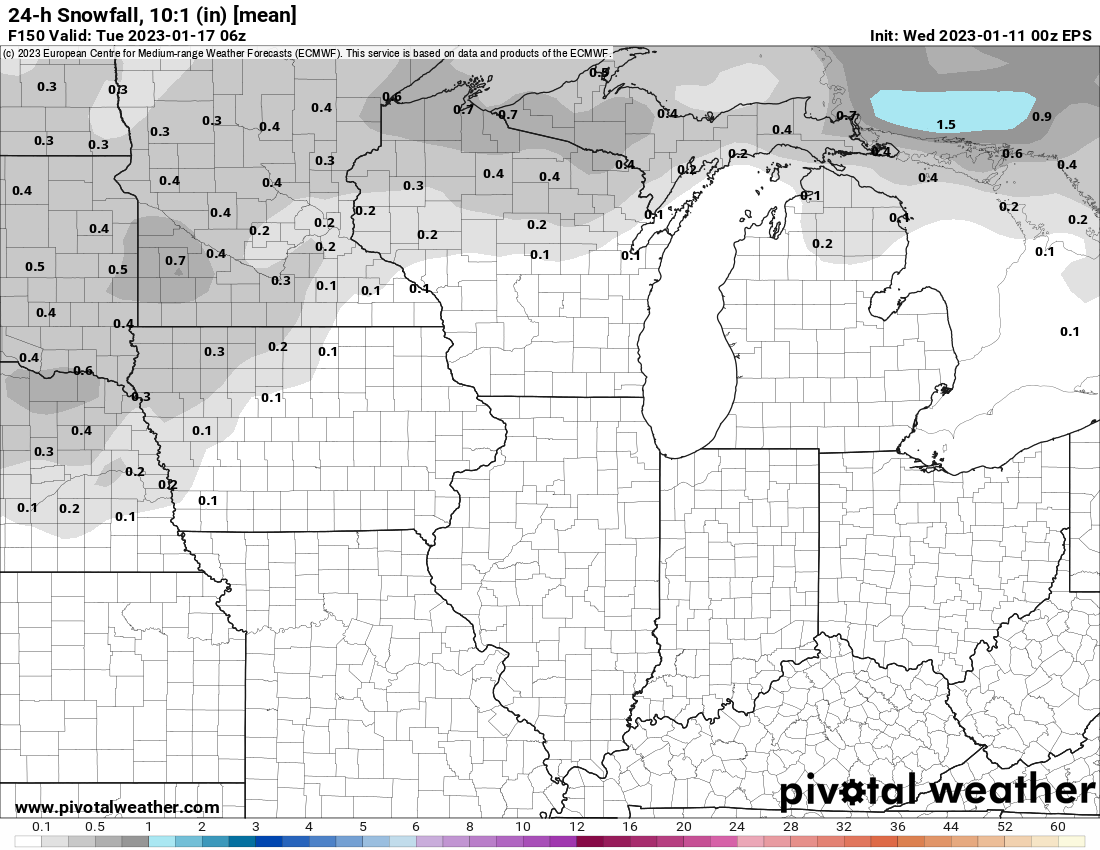The end of the week and weekend will once again be rather quite across the Midwest, but early next week another storm system will bring a shot of warmer air with highs well into the 50s for portions of the area, as well as a risk for showers and thunderstorms.
Through the weekend, East Coast ridging will bring in southwest flow aloft starting the transition to mild temperatures (especially for January) and allowing more moisture to be pulled across the Mississippi River Valley.
Early Monday morning, showers and a few thunderstorms will develop in the area bringing beneficial rainfall. Given the unseasonably mild temperatures this appears to be mainly a rain event opposed to snow which is obviously more typical this time of year.
The best chance for thunderstorms will be in eastern Missouri and through Illinois, while Iowa and Wisconsin are just locked with showers given less instability to work with.
The heaviest precipitation will be found across Missouri, Illinois and Indiana which will be well within the warm sector of this system. Meanwhile, the eastern half of Iowa should see at least a quarter of an inch of precipitation - a number that could be closer to 0.50” is we see some more persistent rains.
The cold side of the storm system will feature a chance for some light snow, but impactful amounts are unlikely as the bulk of the moisture will be focused farther southeast away from the colder air. With that said, some areas could see around an inch, especially northwest Iowa into Minnesota.
There will be a rather large spread in temperatures across the region with southern Missouri approaching 60°. Much of Iowa and northern Illinois should easily climb into the 40s with Minnesota locked more in the low 30s.
-Nick














